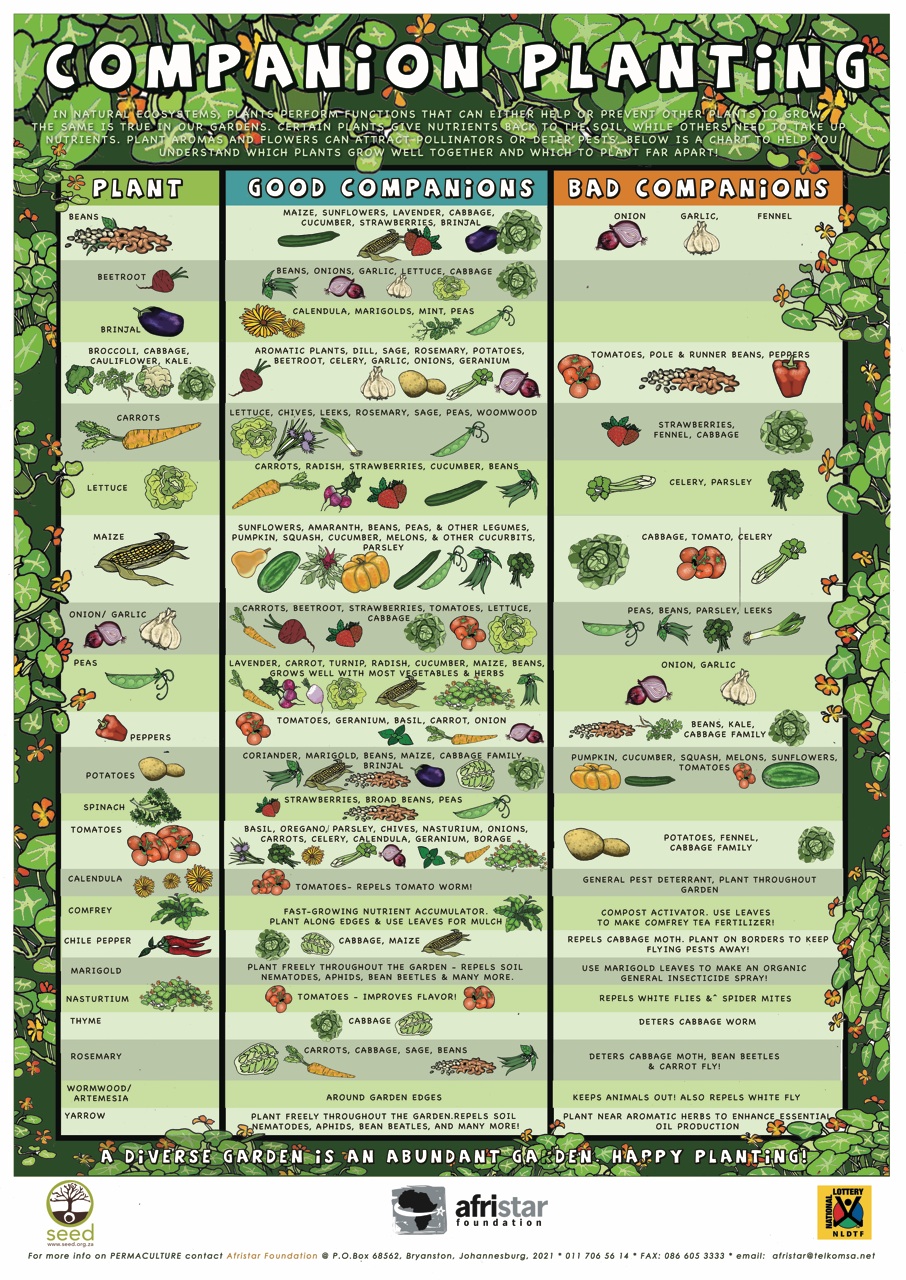Maximize Space, Companion Planting for Urban Gardens

Maximize Space: Companion Planting for Urban Gardens
Companion planting is a savvy technique that's perfect for urban agriculture. If you're working with a small garden, you've got to make every inch count. Think of it like a tiny studio apartment: to fit everything in, you've got to get creative and make friends with your neighbors.
Why Companion Planting?
Companion planting is like setting up a buddy system in your garden. Certain plants just do better together. They might help each other grow, improve the soil, or even repel pests. It's a natural way to boost your garden's productivity and health, fitting perfectly with organic gardening principles.
The Art of Plant Pairing
Plant pairing is the heart of companion planting. Some plants are BFFs, others? Not so much. Tomatoes and basil are besties—basil can improve tomato growth and flavor. But keep your tomatoes away from potatoes. They're both nightshades and can compete for the same nutrients.
Vertical Gardening: The Sky's the Limit
In small garden ideas, you've got to think up as well as out. Vertical gardening is a lifesaver for tiny spaces. Plant climbing beans, peas, or cucumbers alongside sweet corn. The cornstalks act as a natural trellis, and the beans fix nitrogen in the soil, benefiting both plants.
Pest Control the Natural Way
Companion planting can help keep nasty critters at bay. Marigolds, for instance, contain a substance called thiopene, which helps repel nematodes (microscopic worms). Plant them near your tomatoes, and you'll have a prettier garden and fewer pests.
Boosting Soil Health
Some plants are superheroes when it comes to soil health. Legumes like beans and peas fix nitrogen in the soil, making it more fertile. Pair them with heavy feeders like corn or brassicas (think cabbage, kale, broccoli) to keep your soil in tip-top shape.
Companion Planting for Vegetable Gardens
Vegetable companions are key to a thriving urban garden. The classic "Three Sisters" combo—corn, beans, and squash—is a perfect example. The corn provides a trellis for the beans, the beans fix nitrogen, and the squash shades the soil, conserving moisture and suppressing weeds.
Herbs: The Perfect Companions
Herbs aren't just great in the kitchen; they're awesome in the garden too. Many herbs repel pests and attract beneficial insects. Basil, for instance, can repel flies and mosquitoes. Dill and parsley attract ladybugs, which feed on aphids. Check out this guide from Gardeners.com for more herb pairing ideas.
Flowers: Not Just a Pretty Face
Flowers can be powerful allies in your urban garden. They attract pollinators like bees and butterflies, which can boost your garden's productivity. Nasturtiums, for example, attract aphids away from your veggies and act as a sacrificial crop.
Succession Planting: Keep it Moving
Succession planting is like a game of musical chairs in your garden. Plant fast-growing crops like radishes or lettuce between slower-growing ones like carrots or parsnips. By the time the slowpokes need the space, the speedy ones will be harvested.
Interplanting: Mix it Up
Interplanting is like throwing a party in your garden and inviting everyone. Mix different types of plants together—veggies, herbs, and flowers. This can confuse pests, maximize your space, and create a beautiful, diverse garden.
Companion Planting Tips for Urban Gardeners
- Plan Ahead: Sketch out your garden before planting. Think about height, growth habits, and light requirements.
- Rotate Crops: Don't plant the same thing in the same spot year after year. Crop rotation helps prevent disease and nutrient depletion.
- Observe: Pay attention to your garden. If something's not working, don't be afraid to change it up.
Companion Planting Charts: Your New Best Friend
Companion planting charts are a gardener's best friend. They tell you who loves who, and who to keep far, far away. Here's a great one to get you started.
Conclusion
Companion planting is more than just a space-saving technique. It's a way to create a thriving, diverse ecosystem in your urban garden. By pairing plants wisely, you can boost your garden's productivity, improve soil health, and even control pests naturally. So why not give it a try? Your garden will thank you.
FAQs
Q: What is companion planting? A: Companion planting is a gardening technique where you plant different crops together for mutual benefit.
Q: What are some good vegetable companions? A: Classic combos include tomatoes and basil, the "Three Sisters" (corn, beans, and squash), and carrots and onions.
Q: Can companion planting help with pest control? A: Yes! Certain plants, like marigolds and some herbs, can naturally repel pests.
Q: How can I maximize space in my small garden? A: Techniques like vertical gardening, succession planting, and interplanting can help you make the most of a small space.
Q: Where can I find more information on companion planting? A: There are many great resources online, including this guide from Gardeners.com.
0 Response to " Maximize Space, Companion Planting for Urban Gardens"
Post a Comment